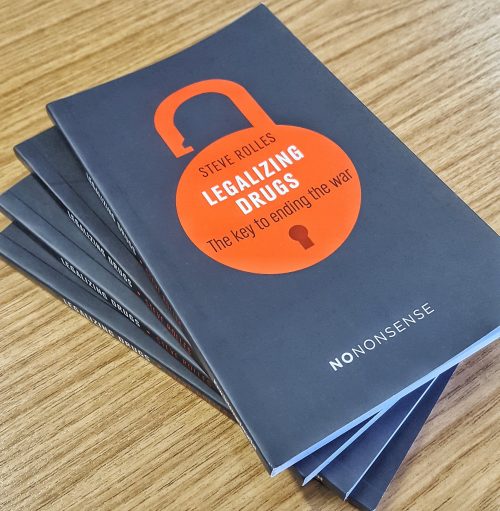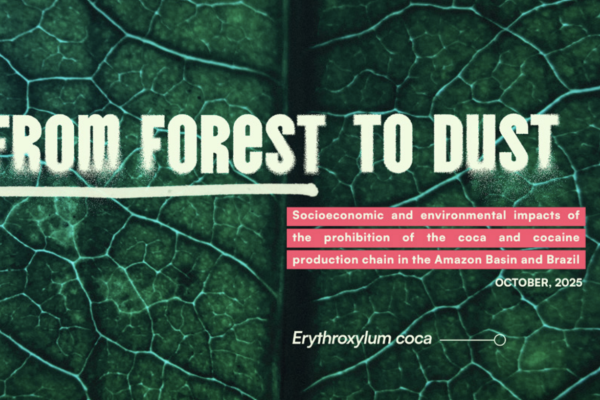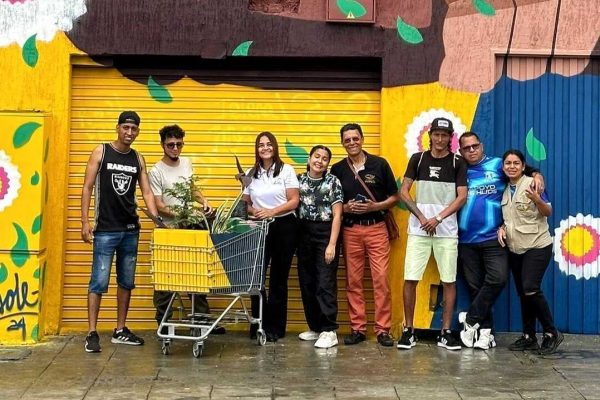26th April 2021
In 2017, New Internationalist published Legalizing Drugs: The Key to Ending the War. It is now available as a free pdf download.
Legalizing Drugs offers a concise history of fifty years of the war on drugs, including its health and social costs, before outlining an alternative path. It looks at where drug law reform is already working, how to overcome the obstacles to reform and what a post drug war world looks like.
Below is the Foreword to the Book, by Cesar Gaviria - the former president of Colombia, and the Introduction by Steve Rolles.
Foreword
We are on the brink of a momentous change in international drug policy that will transform the entire globe. After decades on the margins of the debate, alternatives to prohibition are now not only part of the mainstream high-level debate, but actually becoming a reality, across the Americas and beyond. The work of the Global Commission on Drug Policy (of which I am a proud member) calling for an end to the war on drugs, has had an overwhelmingly positive response, revealing the appetite for change.
I have witnessed the catastrophic failure of the global war on drugs first hand in Colombia and Latin America. Even where successes were achieved – drugs seized, cartels defeated and violent criminals jailed – either the problems moved elsewhere, or other criminals emerged into the vacuum created. As our security situation improved, so it deteriorated elsewhere. Even as Colombia approaches a new era of peace, we, and our neighbors, still carry a terrible burden of violence and instability fueled by the war on drugs.
There is still much to be done. We can certainly focus our enforcement efforts on reducing the violence and bloodshed, rather than the endless and futile pursuit of eradicating drugs from the world completely. We must also strive for an immediate end to the criminalization of people who use drugs; it neither deters use, nor helps those with drug problems. Decriminalization must be the basis of any effective public-health response.
But these important steps are not enough. If we are to end the destructive criminal drugs market and the chaos it has sown across the world, we must take control of it, and the legalization and regulation of drugs within responsible government agencies is indeed the key to achieving this. We must do this not because drugs are safe, but precisely because they are risky – and we seek to manage and reduce those risks. We must deal with the reality of drugs, not some imagined utopia in which they have magically all been eradicated.
Legalization and regulation, as this book makes clear, does not mean an open market. Drugs must be strictly and responsibly regulated – according to their risks. We must learn from mistakes we have made with alcohol and tobacco in the past and get it right this time around. We must prioritize public health, human rights, security and development – not the interests of profit-making companies.
As the Global Commission has long hoped and predicted, the momentum for reform continues to gather pace. A better world is now there for the taking, one in which drug markets are controlled by governments, not gangsters. There is great cause for optimism as we go forward. I commend this book to you, and encourage all who read it to join the movement for change and help to end the ruinous war on drugs, and the catastrophe it has created.
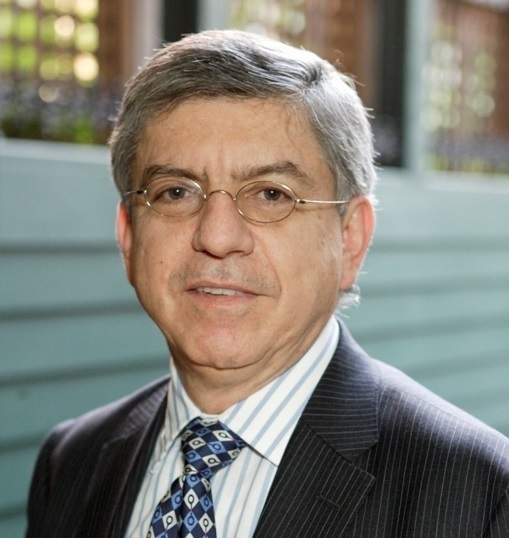
César Gaviria
Former president of Colombia, and member of the Global Commission on Drugs
Introduction
People like to take drugs. Whether to feel good, to relieve pain, to relax, or find spiritual solace, seeking altered states of consciousness has been part of our culture since the dawn of humanity. Psychoactive drug use seems to be almost an innate part of the human condition. And, since civilization began, prohibitions on certain drugs and drug-using behaviors have also been a common – although by no means ubiquitous – feature of the way different societies organize and regulate themselves. Often these prohibitions have been motivated by legitimate concerns about risks – to the drug users, or to those around them. But just as often prohibitions have been driven by the interests of those in power – who view drug use as a threat to their control of the established order, or who use prohibitions as a form of social control over certain groups or perceived threats.
Around the beginning of the 20th century, as a rapidly industrializing world began to consolidate expanding international trade into new forms of international law and global government – so the various efforts to regulate the drug trade and its related risks began to coalesce into a new global drug-control regime. Guided by the temperance instincts of the US, its global hegemonic power in the ascendant within the League of Nations (soon to be United Nations) – a new, highly interventionist, global model of drug prohibition emerged in the form of the 1961 United Nations Single Convention on Narcotic Drugs. This new international legal instrument, ratified by almost every country on earth, not only sought to control the medical trade and use of certain drugs, but also to impose punitive sanctions on the production, supply and use of drugs for non-medical uses.
The new global drug-control system expressly prohibited legally regulated markets for drugs (with the exception of alcohol and tobacco) but put no limits on the severity of sanctions states could apply. It also set the tone of the punitive enforcement responses to follow – speaking of the responsibility of states to ‘combat’ the ‘evil’ of drugs. The description of this new criminal-justice-led model of drug control as a ‘war on drugs’ only entered the popular lexicon in the early 1970s. Launching his new populist catchphrase, Richard Nixon began the steady ratcheting up of the tough-talking enforcement approach in the US – a template that still shapes destructive drug-war policies across the world to this day.
As years have stretched into decades, and now generations, demand for drugs and the illicit markets that supply that demand have continually expanded. The stated aim of the war on drugs, to eradicate the ‘evil’ of drugs from the world, has become an ever more distant and delusional fantasy. Yet, as the staggering failure of this crusade, even on its own narrow terms, has become increasingly evident, the response has been not retreat but rather escalation. And with the ever-increasing billions being poured into the drug war has come an ever-growing toll of human suffering. The costs of the war on drugs, explored in more detail in Chapter 2, have reached almost unimaginable levels of horror and violence. Millions have died avoidable deaths from poisonings, overdoses and infections or have been killed by drug-war violence; millions more have been imprisoned, tortured, and abused – all with wider social and economic costs that are almost impossible to quantify. The war on drugs is a misnomer. This is a war on people – with the most vulnerable and marginalized carrying the heaviest burden.
Drug prohibitions have always been controversial. But while the carnage created by alcohol prohibition in the US of the 1920s soon led to a successful popular campaign for its repeal, the lessons from the failure of the global drugs prohibitions that followed have taken far longer to force a rethink. All the same, even if the debate around what to do about the current mess often remains highly polarized, there is now at least a growing consensus that the war on drugs has failed.
Drug prohibition is one of the last great monolithic legislative injustices and policy catastrophes left standing from the last century. While we have nominally rid ourselves of slavery and apartheid, the war on drugs has emerged as a new tool to discriminate against, suppress and arbitrarily persecute entire populations on the basis of which drugs they choose to use; ‘Our drugs are fine – yours are deviant and will be punished.’ While the suffragette and civil-rights movements have been victorious, people in the US continue to be disenfranchised as a result of convictions and incarceration for minor nonviolent drug offenses. While the modern human rights movement has been formalized in international law, the drug war still licenses widespread state-sanctioned abuse and murder, with impunity for its perpetrators.
Why then, does this self-perpetuating disaster still stumble disastrously on, zombie-like, seemingly immune to all evidence and reason?
In its simplest formulation the answer to this question is down to two key factors. The first is the historic absence of meaningful scrutiny to which the war on drugs has been exposed. Wars have always been fuelled and perpetuated by propaganda and lies, with science, evidence and meaningful evaluation invariably marginalized or entirely absent. The war on drugs has been sustained primarily by populist fear mongering, and its highly effective exploitation by various powers in the service of other ideological, political or financial interests. There is another factor, though: however evident the failings of prohibition have become, progress stalls when there is not an equally compelling vision of a post-prohibition world. This is not just about ending an obviously destructive and awful war. It is about providing a vision of what peace looks like, an alternative that the public can buy into because it offers the genuine promise of improving their lives.
Reassuringly, both of these roadblocks to change are now crumbling away. Recent years have seen the drug-law reform movement growing rapidly in strength and sophistication – becoming dramatically more organized, effective and influential. This civil-society-led movement is providing a relentless and devastating critique of the drug war, challenging its injustices in court, forcing change at the ballot box, demanding that the media provide a more balanced picture, and finding ever more high-profile public figures to champion the reform cause. Moreover, the many smaller incremental wins achieved by the reform movement are now supported by a credible longer-term vision of how a post-prohibition world can better deliver our shared goals – in public health, community safety, development, human rights and child welfare.
Making the case for legalizing and regulating drugs remains a serious challenge – but the achievements of recent years show that it is very possible, even when faced by the most implacable opponents. Bridging the chasm of misunderstandings created by half a century of drug-war hysteria and misinformation requires nuance and patience. It has taken a long time, and many mis-steps, for the reform movement to get this far. It is vital to find common ground – in terms of what we want our drug policy to achieve – with those who are hostile to the idea, and to communicate an alternative vision that will make sense in their terms, painting a picture that connects with their lives and values.
Key concepts are important too, and regulation is key amongst them. We are talking about legalizing and regulating drugs, not a market free-for-all. We are talking about responsible agencies controlling availability to serve the public good, not increased or free availability to serve private profit. And clearly different drugs would require different regulatory responses, depending on their particular risks. Regulation is a concept everyone can understand. It involves managing and minimizing risk. This is what governments do in every area of society, and, when placed alongside other examples – such as the drugs we buy in pharmacies, or in bars and tobacconists – the idea of regulating markets to manage drug risks becomes easy to grasp rather than alien and counter-intuitive. It is because drugs are risky that they need to be legally regulated – rather than abandoning the supply to unscrupulous criminal networks as at present.
Obviously regulation will always be imperfect. As we know from mistakes made with alcohol and tobacco, it can be poorly or inadequately managed; the devil is in the detail. But the debate we need to be having is not whether we should regulate but rather how to get regulation right. Which products should be available? Where should they be sold and by whom? How much should they cost? Who should be able to buy them? Should we allow branding and advertising? Where should they be consumed? These are important questions, the answers to which are likely to be different in different places, and to change as time passes. But if the conversation has moved to these questions, then that is a real step forward.
This conversation has to some extent been taking place since prohibition began. But it is evident that we have now passed a critical threshold. The debate has moved from the margins into the mainstream of political and media discourse, with legalization now openly and enthusiastically advocated by sitting heads of state, UN luminaries, the world’s leading medical journals, and by establishment media outlets from The Times of London to The Economist.
But the debate over drug-law reform is no longer merely theoretical. Almost 100 countries now have ‘harm reduction’ interventions as an official part of their drug strategies, prioritizing pragmatic efforts to improve health and wellbeing over the fruitless ideological pursuit of a drug-free society. Around 25 have ended the criminalization of people who use cannabis – and a few have done the same for all drugs.
Even more significantly, multiple jurisdictions are now exploring models for regulating drugs other than alcohol and tobacco. The recent legalization of cannabis in Uruguay, Jamaica, multiple US states (now including California), and Canada – with many more countries set to follow – has undoubtedly been the fatal hammer blow to the global drug-war consensus. Elsewhere, Switzerland’s successful innovations with the provision of prescribed injectable heroin, Bolivia’s successful legalization and regulation of coca, and New Zealand’s pioneering attempt to establish a regulated market for lower-risk New Psychoactive Substances (NPS) show that new thinking is not restricted to cannabis alone.
Change is happening and the pace of change is accelerating. This provides cause for great optimism, but it is also important to keep things in perspective; war is still the default setting for most drugs, in most of the world. This book not only aims to convince you that legalizing and regulating drugs is the way forward – but also to give you the facts and the arguments that will help you persuade others of that case.
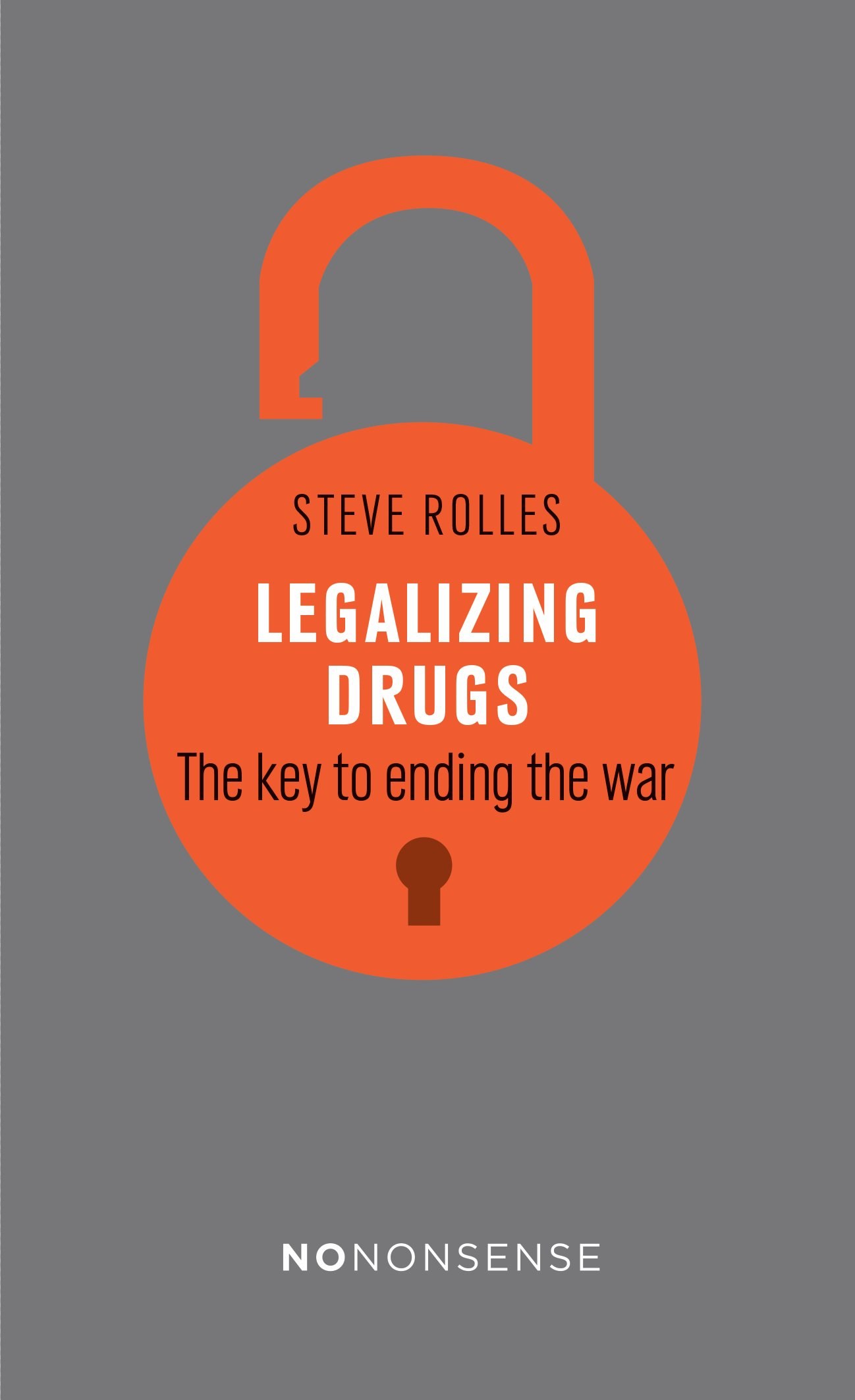
Take
action
Support transform
The time is right for real reform of our drug laws – and you can help. Please support us by giving what you can.

